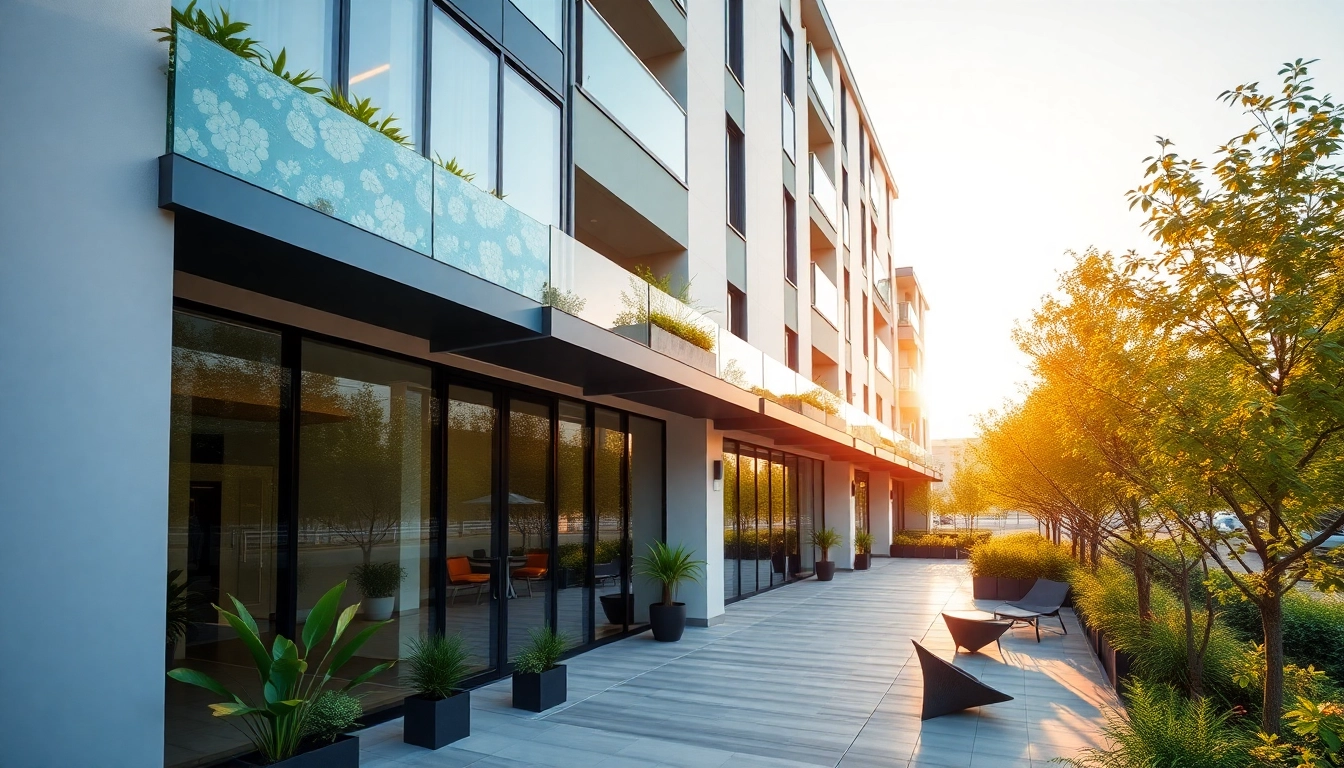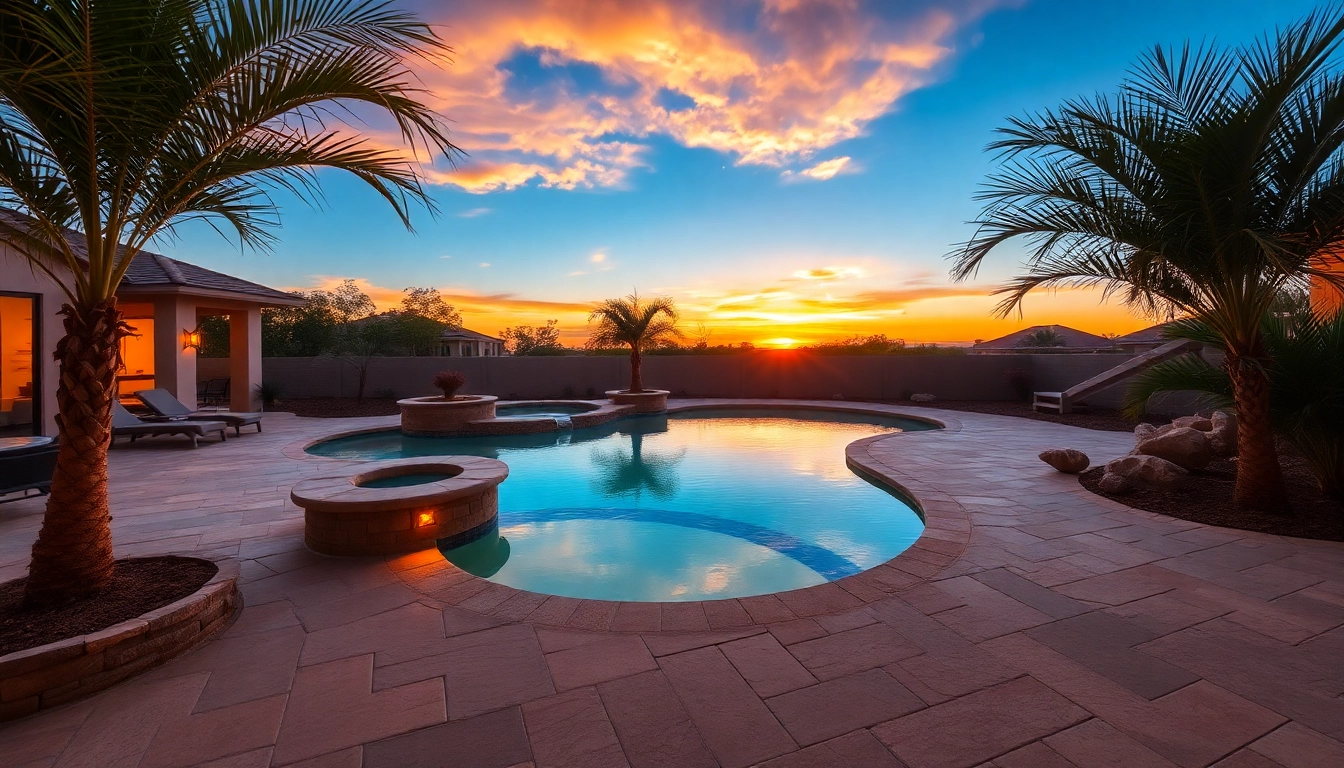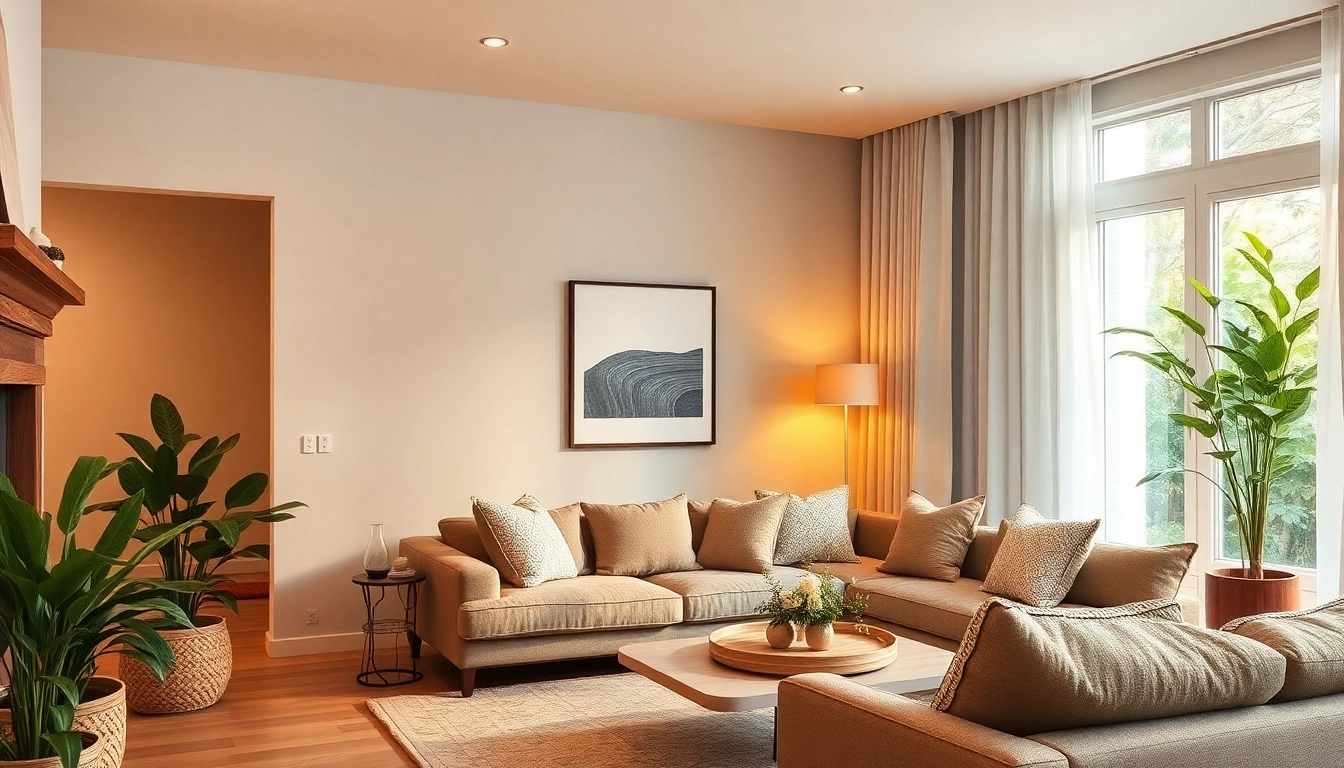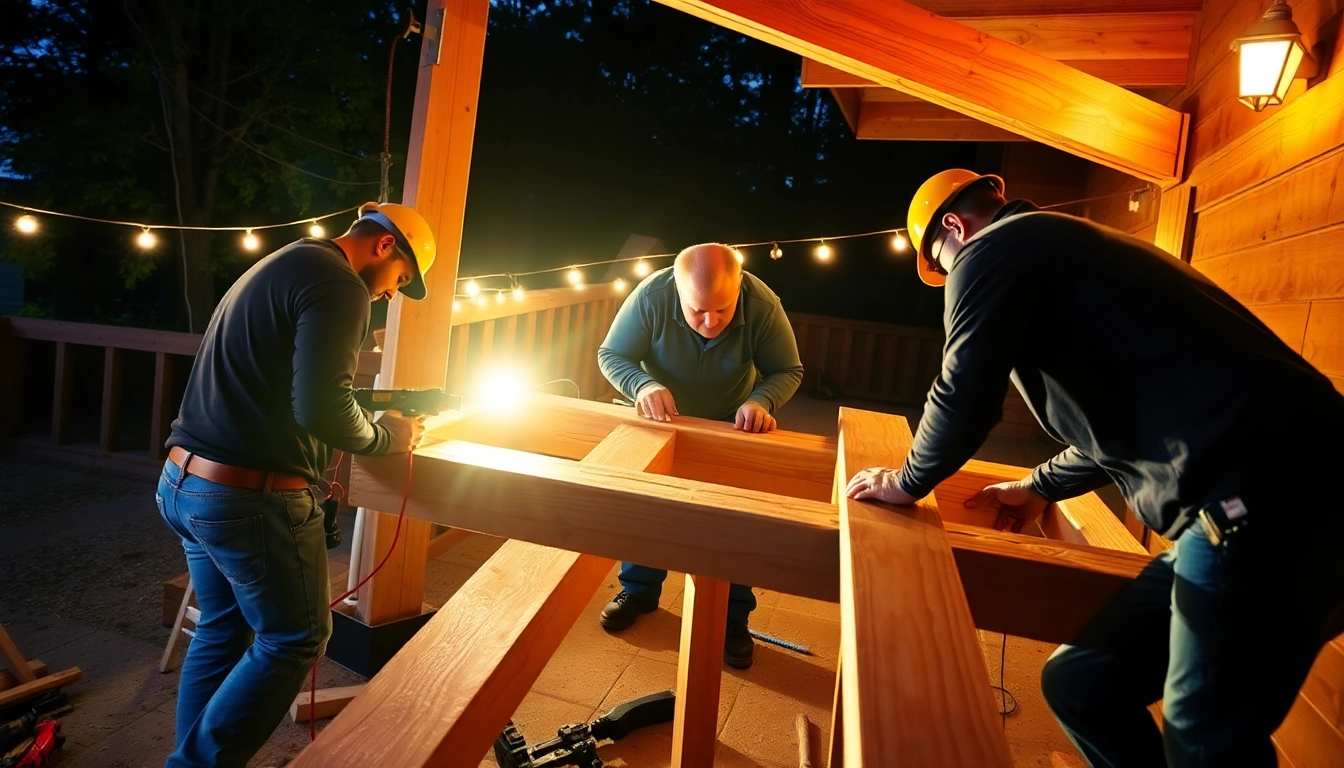Understanding Facade Redesign
What is a Facade Redesign?
Facade redesign refers to the process of altering and upgrading the external facade of a building. This encompasses everything from a simple refresh of materials and colors to a complete architectural overhaul aimed at improving aesthetics, functionality, and energy efficiency. In the modern architectural landscape, where first impressions are crucial, facade redesign has become a vital element in both residential and commercial property improvement, fueling investments that elevate the overall appeal of properties. As you consider this process, it’s essential to recognize how a comprehensive Facade Redesign can completely transform the perception of a building.
Importance of Facade in Architecture
The facade of a building is more than just its exterior; it reflects its identity and purpose. It serves multiple critical functions: aesthetically, it defines the character of the building, contributing to its visual language and context within the surrounding environment. Functionally, it is crucial for insulation, protecting against weather conditions, managing energy consumption, and ensuring comfort for occupants. Moreover, an engaging facade can significantly enhance a building’s economic value by boosting curb appeal and attracting tenants or customers. In urban settings, facades play a vital role in creating a sense of place and identity, making the integration of innovative facade redesigns central to modern architectural practices.
Common Challenges in Facade Redesign
The journey of facade redesign often encounters several challenges. One primary concern is compliance with local building codes and regulations, which are essential for ensuring safety and environmental responsibility. Additionally, selecting the right materials and methods for the desired outcome is critical; incorporating modern technology while matching historical aesthetics can create a delicate balance. From structural issues related to aging buildings to addressing the needs of the surrounding community, architects and designers must navigate various complexities to achieve a successful redesign. Proper planning and consultation are vital for overcoming these hurdles effectively.
Trends in Facade Redesign
Contemporary Materials and Techniques
One of the most exciting aspects of facade redesign is the evolving landscape of materials and techniques. Innovations in construction materials, such as high-performance glass, metal composites, and sustainable options like reclaimed wood or recycled metals, have opened up new avenues for architects. Additionally, techniques like prefabrication and modular construction allow for precision and reduced waste, making the redesign process more efficient. Often, the integration of smart technologies, such as automated shading and energy-efficient insulation, are incorporated to enhance the functionality of facades. These modern materials not only provide aesthetic benefits but also contribute to sustainability goals, reducing the environmental impact of the building.
Eco-Friendly Facade Solutions
The growing awareness of environmental issues has led to an increase in eco-friendly facade solutions. These are designed to minimize energy consumption while maximizing the building’s aesthetic appeal. Features such as green walls, solar panels, and natural ventilation systems are being integrated into facade designs. Moreover, the use of sustainable materials and designs that promote biodiversity is becoming more prevalent. Architects today have the opportunity to create facades that not only look good but also contribute positively to the environment by reducing carbon footprints and promoting sustainability.
Color and Texture Trends
Color and texture are vital components of facade design that influence the overall impact and perception of a building. Current trends favor bold colors and textures that make statements while also blending harmoniously with their surroundings. Vibrant hues are often contrasted with more muted materials to create a layered effect that captures attention. Textures such as rough stone, smooth glass, and vibrant metal finishes provide depth and interest, encouraging viewers to engage with the building. Furthermore, the correct use of color can evoke emotional responses, with certain palettes aligning with the building’s purpose—whether it be a peaceful retreat or a lively commercial hub.
Steps for Successful Facade Redesign
Assessing Your Current Facade
The first step in a successful facade redesign project is conducting a thorough assessment of the current facade. This involves analyzing not just the aesthetic aspects, but also structural integrity, insulation properties, and functionality. Engaging with stakeholders, including community members and potential occupants, can provide insight into what aspects of the facade might need improvement. Assessing local climate conditions can help determine which materials and elements would be most effective in enhancing the building’s performance and comfort.
Engaging a Professional Architect
Once you have a clear understanding of the current facade, it is essential to engage a professional architect with experience in facade redesign. An architect can help translate your vision into a workable plan while considering regulatory constraints, sustainability goals, and aesthetic desires. Their expertise in material selection, technical specifications, and design principles is invaluable, ensuring that the project not only fulfills your requirements but also adheres to best practices in contemporary architecture.
Creating a Budget for Your Project
Creating a realistic budget is crucial for any renovation project, including facade redesign. Costs can vary considerably depending on the complexity of the redesign, materials chosen, and the architectural firm’s fees. It is advisable to allow for contingencies within your budget to account for any unexpected expenses that may arise during the project. Furthermore, considering the long-term savings from energy-efficient designs can help justify initial expenditures, as these often lead to lower operational costs over time.
Case Studies of Successful Facade Redesigns
Residential Transformation Examples
Case studies offer valuable insights into the process and impact of facade redesign. For example, a residential transformation in an older neighborhood might involve updating a dated brick exterior with modern siding and large windows to promote natural light. This not only enhances aesthetics but improves energy efficiency through better insulation and natural lighting. Another example includes the integration of outdoor spaces, creating balconies and terraces that increase livability while enhancing the building’s visual appeal.
Commercial Facade Redesign Inspiration
Commercial properties often undergo facade redesign to improve their marketability and align with brand identity. A successful commercial redesign case could involve the installation of a dynamic metal facade that shifts shape and color with varying light conditions, attracting customers and inviting interaction. For instance, a business might utilize LED lighting incorporated within the facade, enhancing visibility and creating a lively urban atmosphere. These redesigns not only encourage foot traffic but contribute to the sense of community within an area.
Before and After Comparisons
The impact of facade redesign can be dramatically illustrated through before and after comparisons. These visual contrasts showcase the power of modern design techniques and materials, emphasizing the transformation in aesthetics and functionality. For instance, an older, neglected building may be revitalized through a combination of new cladding, updated signage, and improved entry access, effectively breathing new life into both the structure and its surroundings. These comparisons can serve as powerful testimonials to potential clients considering their own redesign projects.
Monitoring and Maintaining Your New Facade
Regular Maintenance Tips
Once the facade redesign has been completed, ongoing maintenance becomes vital to ensure longevity and performance. Regular inspections should focus on identifying signs of wear such as fading, cracking, or signs of water leakage. Depending on the materials used, specific cleaning methods may be needed to maintain their appearance and functionality. Setting up a schedule for routine maintenance, such as cleaning and repairs, can help prevent larger issues and prolong the life of the facade.
Long-Term Performance Metrics
Evaluating the long-term performance of a redesigned facade involves monitoring various metrics like energy consumption, tenant satisfaction, and maintenance costs. Smart building technologies can provide important data on how well the facade performs in terms of insulation and energy savings. Gathering feedback from occupants can provide insights into the effectiveness of the redesign in creating comfortable living or working spaces, influencing future design considerations.
Signs Your Facade Needs Attention
Being attuned to signs that the facade needs attention is crucial for any property owner. Issues like peeling paint, mold, excessive moisture, and structural cracking are all indicators that a facade may be in decline. Early detection of these issues enables timely interventions, preventing more extensive repairs in the future. Regular assessments and engaging with team members skilled in facade maintenance can help ensure that the property remains in excellent condition.



